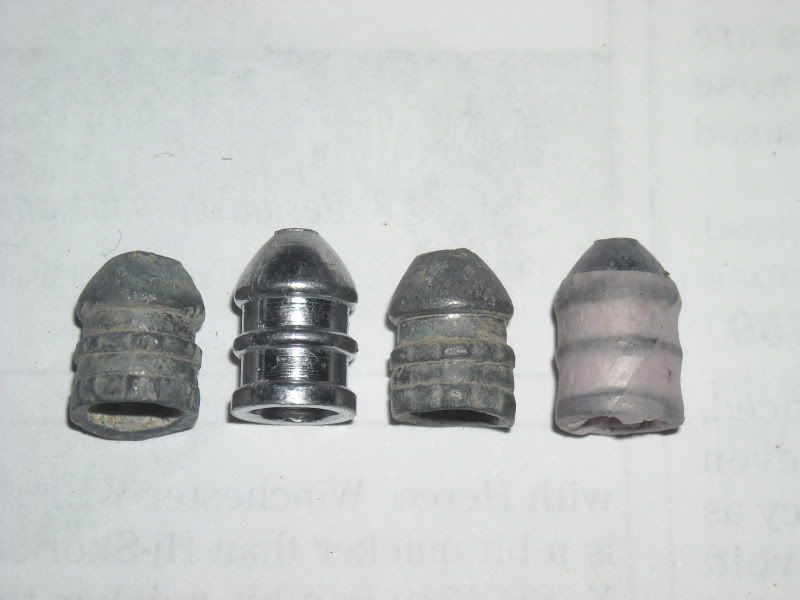Your right, pulling the ball introduces a foreign object (screw) that deformates the ball. That displaced lead has to go someplace.
I'm thinking that and oburated ball will be shorter and wider in the bore, not longer.
The cloth marks may not be longer, only deeper or more pronounced.
I can't prove it either but in my mind the ball not only obturates under pressure but it's shape does indeed oscilate under torsion like modes #4 and #8 shown here; http://www.varmintal.com/amode.htm
An awfull lot of stuff happens to both lead and steel in those nano seconds.
I'm thinking that and oburated ball will be shorter and wider in the bore, not longer.
The cloth marks may not be longer, only deeper or more pronounced.
I can't prove it either but in my mind the ball not only obturates under pressure but it's shape does indeed oscilate under torsion like modes #4 and #8 shown here; http://www.varmintal.com/amode.htm
An awfull lot of stuff happens to both lead and steel in those nano seconds.
Last edited by a moderator:







